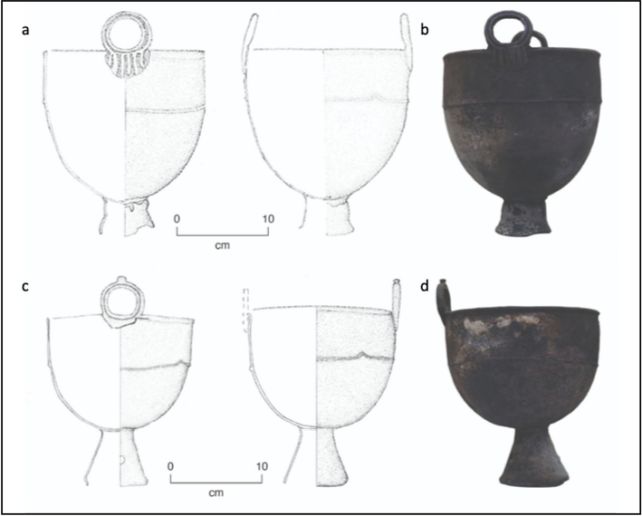ARTICLE AD
Ancient vessels, discovered by accident on the Mongolian steppe, have given us new insight into how the land's ancient inhabitants ate.
Archeologists have scraped caked residue from the insides of two Bronze Age cauldrons dating back 2,750 years, revealing that the vessels were once used for collecting the blood of ruminants, such as sheep and goats, as well as the milk of wild yaks (Bos mutus).
What did they do with the blood, you ask? Well, we can't know for certain, but it was likely used for dietary purposes, such as the production of blood sausage, similar to sausage-making techniques still used in rural Mongolia today.
The discovery extends further backwards in time, not just the collection and consumption of blood in region, but the earliest evidence of wild yaks in Central Mongolia to date.
"Our analysis underscores the remarkable preservative properties of bronze materials, serving as custodians for the conservation of proteins and other organic molecules," says biomolecular archaeologist Shevan Wilkin of the University of Basel in Switzerland.
"These revelations provide a glimpse into the gastronomic traditions and dietary preferences of Bronze Age nomads, shedding light on the diverse culinary methodologies practiced by ancient civilizations."
 The two cauldrons, alongside drawings of them. The larger (a, b) has a diameter of 36 centimeters (14 inches), the smaller (c, d) has a diameter of 28.5 centimeters. (Wilkin et al., Sci. Rep., 2024)
The two cauldrons, alongside drawings of them. The larger (a, b) has a diameter of 36 centimeters (14 inches), the smaller (c, d) has a diameter of 28.5 centimeters. (Wilkin et al., Sci. Rep., 2024)The two cauldrons were discovered in a serendipitous way. Unless archaeological sites across the Mongolian steppe are accompanied by a burial mound, it's almost impossible to know that one is there. In this case, two herders in the Khovsgol province unexpectedly stumbled across the site while working on a fence for a horse corral.
In the course of their digging, they excavated not just the cauldrons, but other artifacts as well, which they then gave to the Mongolian Academy of Sciences, from whence researchers could access and study them.
Wilkin and her colleagues performed an exhaustive and detailed study of the two cauldrons. They used radiocarbon dating to determine how old they were, and then took samples from the interior of both to perform a protein analysis.
This, they hoped, would reveal something about the diet of the people who once used the cauldrons. Scientists have discovered other, similar cauldrons that were once used as cooking vessels for meat, for example. But what Wilkin and her colleagues found was a little different.
Their proteomic analysis revealed the presence of blood proteins, as well as a glycoprotein that is expressed in the liver. These proteins were then classified as originating in ruminants: animals such as goats and Barbary sheep (Ammotragus lervia).
But that wasn't the only thing the researchers found. Secondary proteins in the cauldron were traced to the milk of wild yaks. Although we don't know precisely how these two liquids, blood and milk, were used, the fact that they were used at all tells us a great deal about the way the Mongolian Bronze Age people lived.
"Our data suggest that the two particular cauldrons from northern Mongolia were used to collect the blood of ruminant animals during slaughter, and were likely an important part of food production. If the blood was collected, as per our suggestion, for sausage production it would extend the antiquity of this practice at least 2,700 years into the past," the researchers write in their paper.
"As ruminant dairying has been practiced in the region for over 5,000 years, this is hardly surprising. Our finding of Bronze Age yak milk is also intriguing, as it provides insights into when yaks may have first been included in Mongolian subsistence."
Such bronze vessels, the researchers conclude, may represent an untapped resource for understanding ancient civilizations, since the metal has antibacterial properties that can preserve organic materials for millennia.
The research has been published in Scientific Reports.

 5 months ago
27
5 months ago
27 

